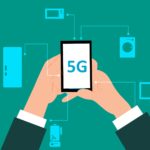Ultra-trusted low latency communications (URLLC), key to the future of telecommunications

November 19, 2020
New services and applications that require lower latency, better reliability, massive connection density, and increased energy efficiency are emerging in an unprecedented way. 5G, is in a position of privilege and also with its technological support that will allow you to meet all the demands of emerging markets. The industrial internet, smart networks, remote surgery and intelligent transport systems require support for critical applications, that’s where Ultra Reliable Low Latency Communication (URLLC) makes its appearance.
With 4G LTE technology, latency is currently in the 4 millisecond range according to 3GPP Release 14. Version 15 of the URLLC already exists and its target is 1 millisecond. Applications that require end-to-end security will require URLLC as it will provide nearly 100% reliability in terms of the times packets are delivered.
Combining these capabilities will require a different design of system operations by comparing it to past wireless technologies.
The physical layer is undoubtedly the most complex because URLLC must meet two conflicting requirements: low latency and very high reliability. This combination is a very different type of quality of service (QoS) compared to traditional mobile broadband applications.
New architectures needed
Mission-critical applications require stringent communications performance and reliability requirements. Communications with vehicles, high-speed trains, drones and industrial robots are just a few examples of applications in which technology wireless must meet high reliability and low latency requirements (e.g., 1 ms), or both at the same time. These apps often they also have strong security requirements.
To meet all of these requirements, 5G combines URLLC with enhanced mobile broadband services (eMBBs), all within a unified 5G interface. To reach the 1 millisecond goal, the basic problem to address is end-to-end network latency. This is the period of when, for example, an Internet of Things (IoT) sensor transmits data to the point at which processing is performed at the back end of the network, and subsequent communications are generated by the network in response and received on the sensor. This involves communications from application processing on the device modem to application processing on the base station modem.
Benefit of URLLC
Ultra Low Latency Communications (URLLC), will enable in Industry 4.0, autonomous driving services, remote health services, mission-critical services among others.
This is the fifth generation (5G) mobile communication technology that represents the complete evolution of telecommunications technology and that will change future life of all people and organizations with a wide range of advantages that will be great benefit for all people, among the most outstanding are:
- Large amount of transmission data (in Gigabit per second).
- Reduces network response time since an instruction is given to a network device until it reacts.
- Enables the connection of up to 1 million devices per square kilometer. This will allow for exponential growth of the Internet of Things.
- Easily manageable with previous generations.
- Provides consistent, uninterrupted, consistent connectivity around the world.
- It will be applied in education, medical treatment, automobiles and other fields in the future.
- It provides a variety of services as a converged network, but also a more complex and dense network.
- Allows users to conveniently and quickly access anytime and anywhere.
- It not only lies in the additional improvement of data transmission speed, but also in the extension of human capacity. Everything around him is in a real-time network status, and can be perceived and interact with each other.
- It will allow the generation of new types of services, and different types of processes to improve production chains.
Future of URLLC
For many, the big picture projected in the future is that there will be 20 billion things connected and $1 trillion in global IoT investments in 2022. IoT in general is reaching the expected scale for massive IoT, which refers to tens of billions of devices, objects, and machines that require ubiquitous connectivity, whether mobile, nomadic or stationary. The international 3GPP standards organization has been securing the future of cellular technology to meet market requirements in a large number of vertical industries for mass IoT, which by definition means at least one million devices per kilometer.
Technology solutions such as cloud computing, edge cloud, and artificial intelligence are being applied to IoT use cases with great success. In addition, cellular technologies for IoT address security optimizations to protect data generated by all of these things from hackers, 3GPP standards are facing the challenge of the developing IoT market with many 5G optimizations, building on the solid foundation provided by 4G and addressing key performance indicators such as low latency, high reliability and positioning accuracy necessary for the industrial, business and even consumer use of IoT devices.
With the move towards 5G, mobile networks are expected to efficiently support the simplest devices that communicate infrequently and are ultra energy efficient for the long term with more than ten years of battery life. In addition, for Critical IoT, radiocommunications and the Architecture of Ultra Reliable and Low Latency Communications (URLLC) are defined in the standards and will be critical for vertical industries such as smart factories and industrial automation.
Low latency is a crucial ingredient in ensuring applications is usable and interactive whether communication occurs from human-to-human, human-to-machine, or machine-to-machine. This report presents a brief description of pop-up applications, design challenges, and potential approaches to URLLC design.
New Services & Applications with 5G Ultra-Reliable Low Latency Communication was written by 5G America’s members and is available for free download on the 5G Americas Website.








